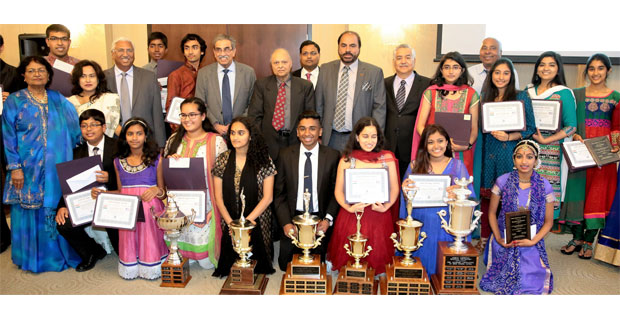RECOGNISING YOUNG INDIANS
What has been the source of funding over the past 30 years?
I met with Professor Frank Chookolingo who had donated substantial amount of money to the University of Southern California for the promotion of Indian culture. He was a PIO from Trinidad, yet agreed to give seed money of $5000 for recognizing brilliant and the brightest among Indian students graduating from high school. We started with eight scholarship awards ranging from $200 to $1000. Over the years, the number has been increased to twenty-four while the amount for high school graduates ranges from $750 to $2000. In addition to giving scholarships for academic excellence, four awards are given for outstanding achievements in Math and Science, sports, visual and performing arts and community service.
Every award comes with a rider—who are judging the awardees? In order to make the event credible you must have a system of selection of judges. Please elaborate?
SAT score and GPA require no judging. But we require an independent panel of three to five judges to evaluate extracurricular activities of the applicants. Judges’ score for each applicant is fed into the computer and then average score for each applicant is worked out. The judges also verify the accuracy of the quiz grading and computer data entry for final computation to computer-select the winners. Based on the number of applicants, we need three to five groups of judges who spend four to six hours grading the applicants.
Judges exercise complete independence in grading the applicants and have generally not been part of the organizing committee. We have recruited judges from parents of past winners, academia, and community leaders. Grading applicants is a gruelling task, so, at times, we have not been able to get required number of judges from known sources. In case we have faced a shortage of judges, we have taken the help of some members of the organizing committee. We have tried to make our selection criteria as transparent as we can.











Comments.